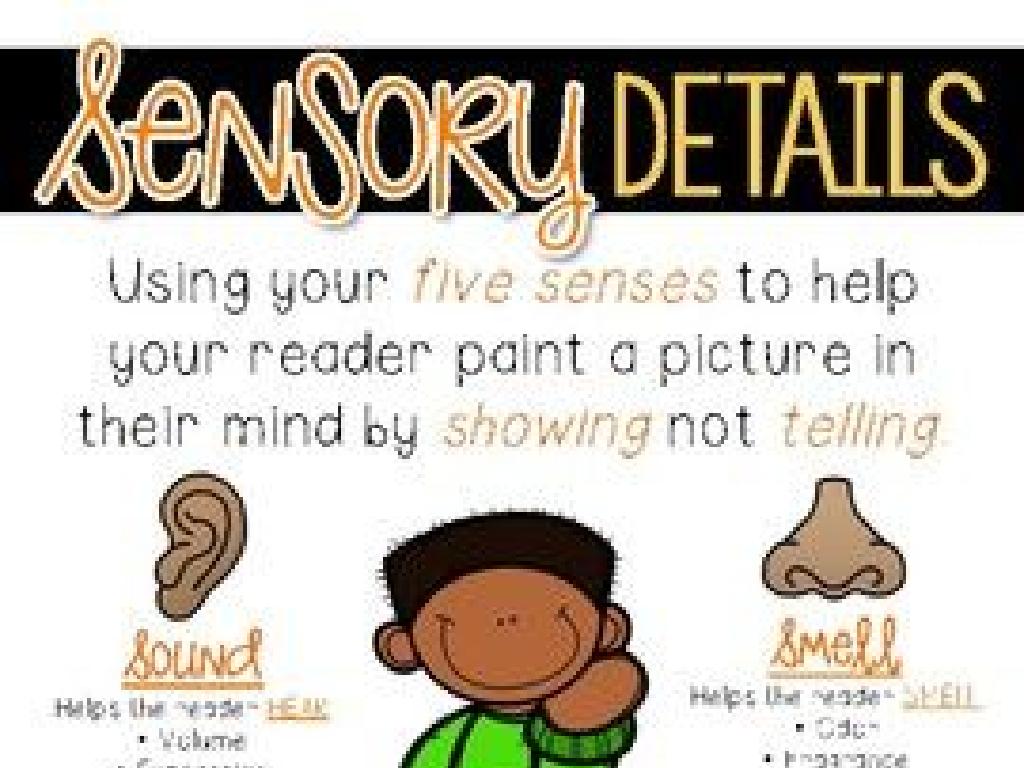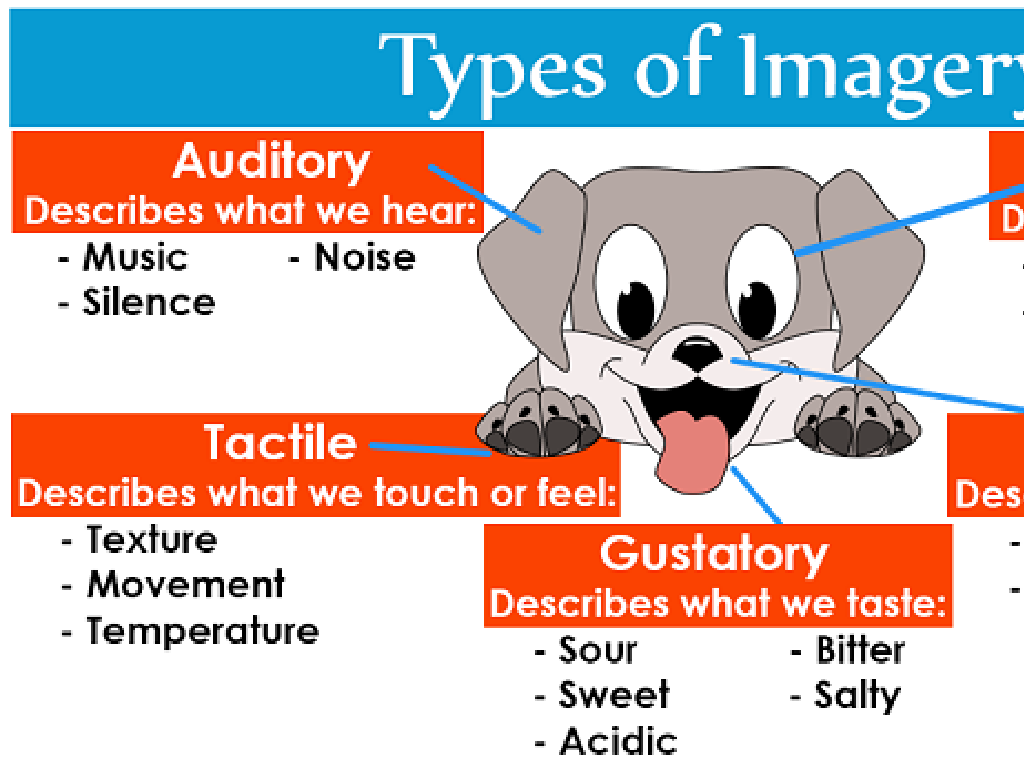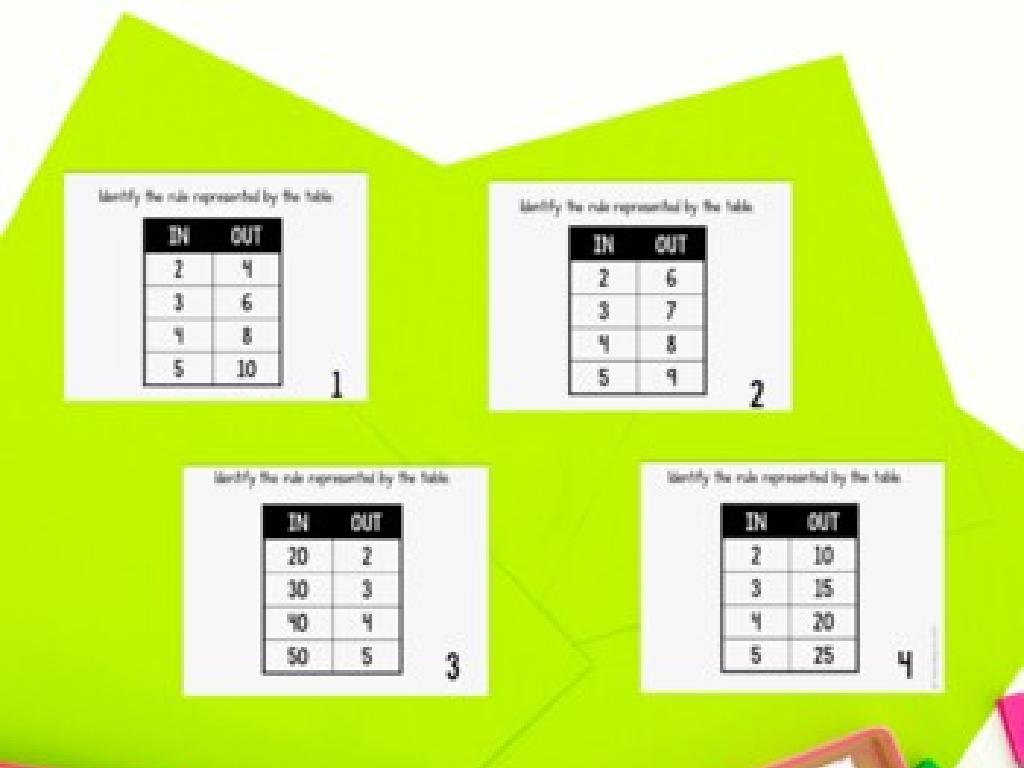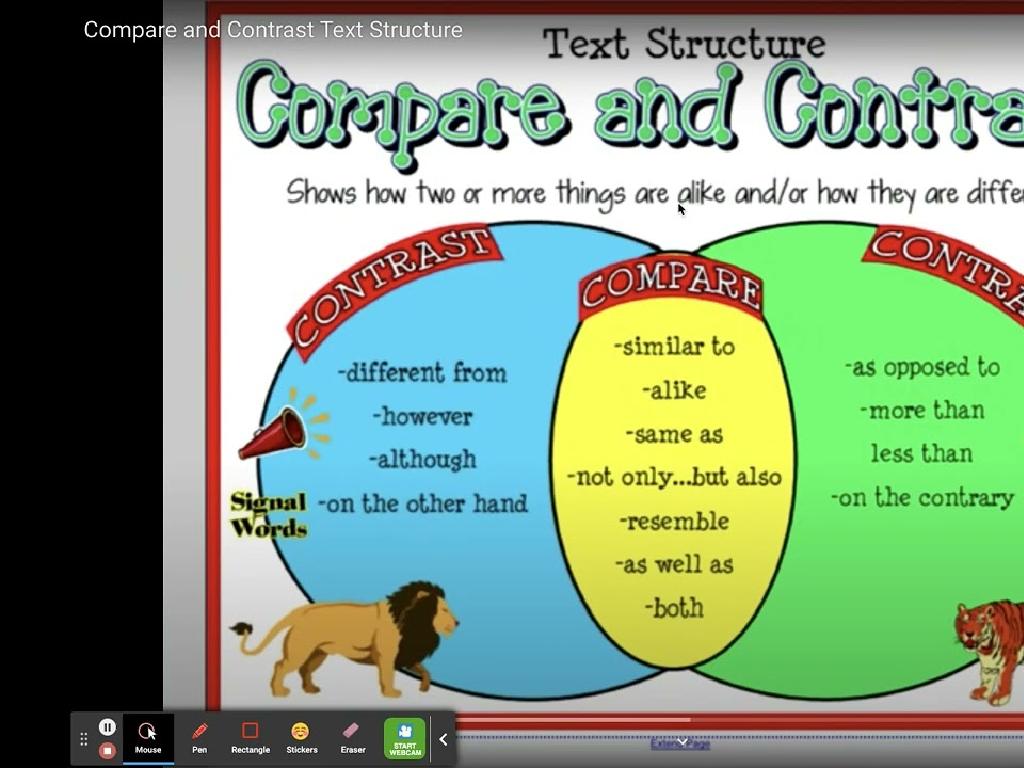Sort Soft And Hard G Words And Soft And Hard C Words
Subject: Language arts
Grade: Second grade
Topic: Soft G And C
Please LOG IN to download the presentation. Access is available to registered users only.
View More Content
Exploring Soft and Hard Sounds of ‘g’ and ‘c’
– Learn about ‘g’ and ‘c’ sounds
– ‘g’ can sound like ‘g’ in ‘goat’ or ‘j’ in ‘giraffe’
– Identify words with ‘g’ and ‘c’
– Can you find ‘g’ or ‘c’ in your favorite book?
– Soft vs. hard sounds
– Soft ‘g’ like ‘j’, hard ‘g’ like ‘go’. Soft ‘c’ like ‘s’, hard ‘c’ like ‘cat’
– Importance for spelling and reading
|
This slide introduces the concept of soft and hard sounds for the letters ‘g’ and ‘c’. Start by explaining that the letter ‘g’ can make two sounds: a hard ‘g’ as in ‘goat’, and a soft ‘g’ as in ‘giraffe’. Similarly, ‘c’ can sound like ‘k’ in ‘cat’ or ‘s’ in ‘cent’. Engage the class by asking them to think of words containing these letters and discuss the sounds they make. Emphasize how recognizing these sounds can aid in learning to spell and read new words. Plan an activity where students sort words into soft and hard sounds, and encourage them to practice by reading aloud and listening for the ‘g’ and ‘c’ sounds in different words.
Soft and Hard Sounds of G and C
– What are soft sounds?
Soft sounds are like ‘g’ in ‘giraffe’ or ‘c’ in ‘circle’.
– What are hard sounds?
Hard sounds are like ‘g’ in ‘goat’ or ‘c’ in ‘cat’.
– Listening to soft and hard sounds
– Practice distinguishing sounds
We’ll sort words by their g and c sounds.
|
This slide introduces the concept of soft and hard sounds in the context of the letters ‘g’ and ‘c’. Begin by explaining that soft sounds are gentle and often appear before ‘e’, ‘i’, or ‘y’, while hard sounds are stronger and can appear before ‘a’, ‘o’, ‘u’, and sometimes ‘e’ and ‘i’. Use audio clips or speak words aloud to demonstrate the difference between soft and hard sounds. Engage the class by having them repeat after you. Then, conduct a sorting activity where students listen to words and determine if the ‘g’ or ‘c’ sound is soft or hard. This will help reinforce their understanding and ability to distinguish between the two types of sounds.
The Letter ‘G’: Soft and Hard Sounds
– ‘G’ can sound like ‘j’
– Example: ‘giraffe’ has a soft ‘g’
– ‘G’ can also sound like ‘go’
– Example: ‘golf’ has a hard ‘g’
– Practice saying words aloud
– Listen for the soft and hard ‘G’
|
This slide introduces the concept of soft and hard ‘g’ sounds to second graders. Begin by explaining that the letter ‘G’ can make two different sounds. The soft ‘g’ sounds similar to ‘j’, and can be heard in words like ‘giraffe’. The hard ‘g’ sound is like the ‘g’ in ‘go’, as in the word ‘golf’. Have the students practice saying words with both soft and hard ‘g’ sounds to familiarize themselves with the concept. Encourage them to listen carefully to the sounds they make and to repeat after you. You can turn this into a fun activity by saying words out loud and having the students identify if the ‘g’ sound is soft or hard.
Exploring Soft and Hard ‘C’ Sounds
– Soft ‘c’ sounds like ‘s’
– Example: ‘circle’, ‘city’, ‘cereal’
– Hard ‘c’ sounds like ‘k’
– Example: ‘cat’, ‘car’, ‘cup’
– Find more soft ‘c’ words
– Find more hard ‘c’ words
|
This slide is aimed at helping second-grade students differentiate between the soft and hard sounds of the letter ‘C’. Begin by explaining that the letter ‘C’ can make two different sounds. The soft ‘c’ sound is similar to ‘s’, and it often appears before the letters ‘e’, ‘i’, or ‘y’. Provide examples like ‘circle’, ‘city’, and ‘cereal’. Then, describe the hard ‘c’ sound, which is like ‘k’, and is usually found before the letters ‘a’, ‘o’, ‘u’, or a consonant. Give examples such as ‘cat’, ‘car’, and ‘cup’. Encourage students to think of additional words that fit these categories as a class activity. You can make this interactive by having students come up to the board to write their words or share them aloud with the class. This will help reinforce their understanding of the concept through practice and participation.
Sorting Game: Soft and Hard Sounds
– Learn to sort soft and hard sounds
– Listen to the word I say
– Decide if it’s a soft or hard sound
– Is ‘giraffe’ a soft or hard ‘g’? How about ‘cat’ for ‘c’?
– Get ready to play and learn!
|
This interactive game is designed to help students differentiate between soft and hard sounds of the letters ‘g’ and ‘c’. Start by explaining that ‘g’ can make a soft sound like in ‘giraffe’ or a hard sound like in ‘goat’. Similarly, ‘c’ can be soft as in ‘circle’ or hard as in ‘cat’. Pronounce words clearly and give students time to think and decide on the sound type. Encourage participation and gently correct mistakes, reinforcing the correct sound. You can use props or visuals to make the game more engaging. Prepare a list of words with both soft and hard sounds for ‘g’ and ‘c’ to use during the game. This activity will enhance their phonetic skills and prepare them for more advanced reading tasks.
Practice Time: Soft and Hard Sounds
– Write words with soft and hard ‘g’
– Soft ‘g’ like in ‘giraffe’, hard ‘g’ like in ‘goat’
– Write words with soft and hard ‘c’
– Soft ‘c’ like in ‘circle’, hard ‘c’ like in ‘cat’
– Sort words into correct groups
– Improve reading and spelling skills
|
This slide is for a class activity focused on distinguishing between the soft and hard sounds of the letters ‘g’ and ‘c’. Start by explaining the difference between soft and hard sounds. For ‘g’, soft sound is like ‘g’ in ‘giraffe’, and the hard sound is like ‘g’ in ‘goat’. For ‘c’, soft sound is like ‘c’ in ‘circle’, and the hard sound is like ‘c’ in ‘cat’. Have students write down words under each category. Then, work together to sort them into the correct groups. This activity will help students recognize patterns in word pronunciation, which is essential for improving their reading and spelling abilities. Provide guidance and positive reinforcement as they work through the exercise.
Class Activity: Word Hunt Adventure
– Explore the classroom on a word hunt
– Find objects with soft and hard ‘g’ sounds
– ‘g’ as in ‘giraffe’ or ‘goat’
– Find objects with soft and hard ‘c’ sounds
– ‘c’ as in ‘cereal’ or ‘cat’
– Make a list to share with everyone
– Write down your words to discuss later
|
This interactive activity is designed to help students differentiate between soft and hard ‘g’ and ‘c’ sounds in a fun and engaging way. Encourage students to look around the classroom for objects or images that may contain these sounds. For example, they might find a ‘giraffe’ picture for a soft ‘g’ or a toy ‘cat’ for a hard ‘c’. Once they find an item, they should write it down on their list. After the hunt, gather the students and have them share their findings, reinforcing their understanding of the sounds. This activity not only makes learning phonics enjoyable but also enhances their observational skills and ability to categorize sounds.
Great Sorting Today!
– Excellent work with soft and hard sounds
– Practice makes perfect
– Listen for ‘g’ and ‘c’ sounds daily
– Notice these sounds in conversations, TV shows, and books
– Keep up the good work!
|
This slide is meant to congratulate the students on their hard work during the lesson and to encourage them to continue practicing outside of the classroom. Reinforce the idea that mastering the soft and hard sounds of ‘g’ and ‘c’ comes with regular practice and active listening. Encourage them to be detectives of sounds in their everyday environment, whether they are talking to friends, watching their favorite shows, or reading a book. Remind them to pay special attention to new words and to try to determine if the ‘g’ and ‘c’ sounds are soft or hard. This will help solidify their understanding and make them more confident in their ability to sort these sounds.






